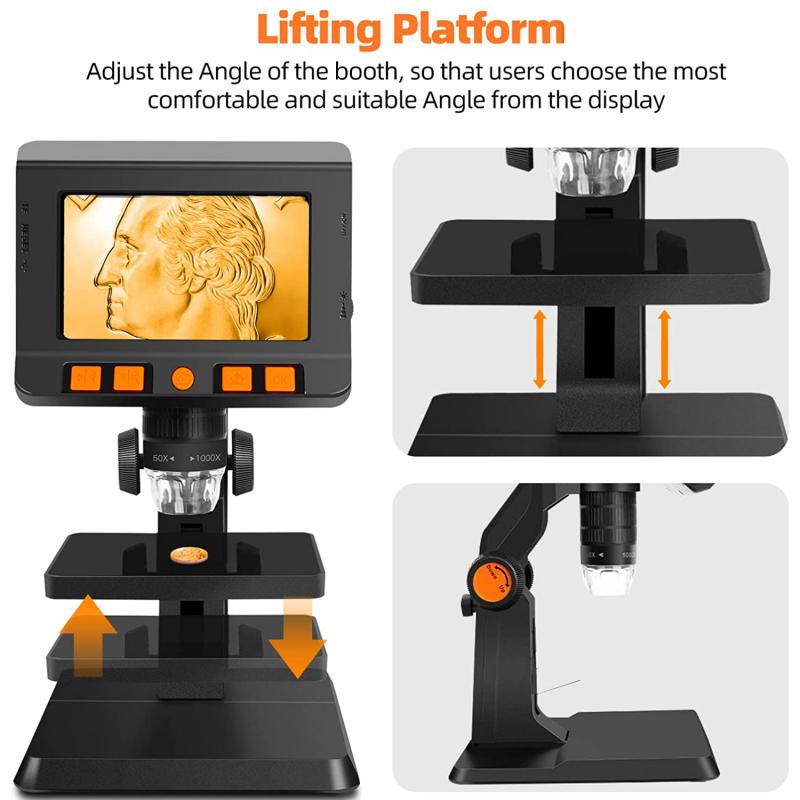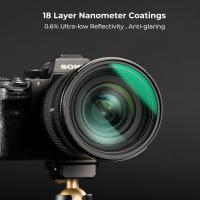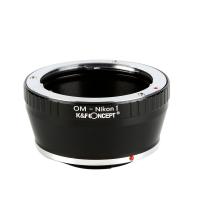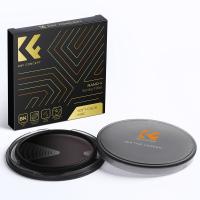What Is Resolution Of Light Microscope ?
The resolution of a light microscope refers to its ability to distinguish two closely spaced objects as separate entities. It is determined by the wavelength of light used and the numerical aperture of the microscope's objective lens. The theoretical limit of resolution for a light microscope is approximately half the wavelength of light used. However, in practice, the resolution is often limited by factors such as lens aberrations and specimen preparation. The resolution of a typical light microscope is around 200-300 nanometers, which allows for the visualization of cellular structures and some subcellular components. To achieve higher resolution, techniques such as confocal microscopy, super-resolution microscopy, or electron microscopy are employed.
1、 Numerical aperture
The resolution of a light microscope refers to its ability to distinguish two closely spaced objects as separate entities. It is a measure of the microscope's ability to provide clear and detailed images. The resolution of a light microscope is determined by several factors, one of which is the numerical aperture (NA).
Numerical aperture is a measure of the light-gathering ability of a lens system. It is defined as the product of the refractive index of the medium between the specimen and the lens and the sine of the half-angle of the cone of light entering the lens. In simpler terms, it is a measure of how much light can enter the lens and contribute to the formation of an image.
The numerical aperture has a direct impact on the resolution of a light microscope. According to the Abbe diffraction limit, the maximum resolution of a light microscope is approximately equal to half the wavelength of the light used divided by the numerical aperture. This means that a higher numerical aperture allows for better resolution.
In recent years, there have been advancements in microscope technology that have pushed the limits of resolution beyond what was previously thought possible. Techniques such as super-resolution microscopy have allowed researchers to achieve resolutions beyond the diffraction limit. These techniques utilize various methods, such as structured illumination or single-molecule localization, to overcome the diffraction barrier and provide higher resolution images.
Overall, the numerical aperture plays a crucial role in determining the resolution of a light microscope. Higher numerical apertures allow for better resolution, but advancements in microscopy techniques have allowed researchers to achieve resolutions beyond the diffraction limit, opening up new possibilities for studying biological structures and processes at a finer scale.

2、 Magnification
The resolution of a light microscope refers to its ability to distinguish two closely spaced objects as separate entities. It is a measure of the microscope's ability to provide clear and detailed images. The resolution of a light microscope is limited by the wavelength of light used to illuminate the specimen and the numerical aperture of the objective lens.
The theoretical resolution limit of a light microscope was first described by Ernst Abbe in the late 19th century. According to Abbe's formula, the resolution is inversely proportional to the numerical aperture and the wavelength of light. This means that shorter wavelengths and higher numerical apertures result in better resolution.
In a traditional light microscope, the resolution is limited to around 200-300 nanometers, which is the diffraction limit of visible light. This means that two objects closer than this distance will appear as a single blurred image. However, recent advancements in microscopy techniques have pushed the resolution beyond the diffraction limit.
One such technique is called super-resolution microscopy, which includes methods like stimulated emission depletion (STED) microscopy, structured illumination microscopy (SIM), and single-molecule localization microscopy (SMLM). These techniques utilize fluorescent probes and complex algorithms to overcome the diffraction limit and achieve resolutions in the range of tens of nanometers or even better.
Super-resolution microscopy has revolutionized the field of cell biology by allowing researchers to visualize cellular structures and processes at unprecedented detail. It has provided insights into the organization of molecules within cells, the dynamics of cellular processes, and the interactions between cellular components.
In conclusion, the resolution of a traditional light microscope is limited to around 200-300 nanometers. However, with the advent of super-resolution microscopy techniques, researchers can now achieve resolutions beyond the diffraction limit, enabling them to explore the intricate details of biological systems at the nanoscale.

3、 Wavelength of light
The resolution of a light microscope refers to its ability to distinguish two closely spaced objects as separate entities. It is determined by the wavelength of light used in the microscope and the numerical aperture of the lens system. The resolution of a light microscope is limited by the diffraction of light, which causes the light waves to spread out as they pass through the lens.
The wavelength of light plays a crucial role in determining the resolution of a light microscope. According to the Abbe diffraction limit, the resolution of a microscope is approximately equal to half the wavelength of light used. In traditional light microscopes, visible light with a wavelength range of 400-700 nanometers is used, resulting in a theoretical resolution limit of around 200-350 nanometers.
However, recent advancements in microscopy techniques have pushed the limits of resolution beyond the traditional diffraction limit. Super-resolution microscopy techniques, such as stimulated emission depletion (STED) microscopy and structured illumination microscopy (SIM), have enabled scientists to achieve resolutions below the diffraction limit. These techniques involve manipulating the light or the sample to overcome the diffraction barrier and achieve higher resolution imaging.
For example, STED microscopy uses a combination of laser beams to excite and deplete fluorescent molecules, resulting in a highly confined focal spot and improved resolution. SIM, on the other hand, uses patterned illumination and computational algorithms to reconstruct high-resolution images.
These advancements have revolutionized the field of microscopy, allowing researchers to visualize cellular structures and processes with unprecedented detail. The ability to resolve structures at the nanoscale has opened up new avenues for studying biological systems and understanding fundamental cellular mechanisms.
In conclusion, the resolution of a light microscope is determined by the wavelength of light used. While the traditional diffraction limit sets a theoretical resolution limit, recent advancements in super-resolution microscopy techniques have pushed the boundaries of resolution, enabling scientists to visualize structures below the diffraction limit. These advancements have greatly enhanced our understanding of the microscopic world and have the potential to drive further discoveries in various scientific disciplines.

4、 Abbe's diffraction limit
The resolution of a light microscope refers to its ability to distinguish two closely spaced objects as separate entities. Ernst Abbe, a German physicist, formulated the diffraction limit, also known as Abbe's diffraction limit, which sets a theoretical limit on the resolution of a light microscope. According to Abbe's diffraction limit, the resolution of a light microscope is limited by the wavelength of light used and the numerical aperture of the lens system.
Abbe's diffraction limit states that the smallest resolvable distance (d) between two points is approximately equal to half the wavelength of light (λ) divided by the numerical aperture (NA) of the lens system. Mathematically, it can be expressed as d = λ / (2 * NA).
In practical terms, this means that the resolution of a light microscope is limited by the wavelength of light used. Visible light has a wavelength range of approximately 400-700 nanometers, which limits the resolution of a traditional light microscope to around 200-350 nanometers. This means that two objects closer than this distance will appear as a single blurred image.
However, it is important to note that recent advancements in microscopy techniques have pushed the limits of resolution beyond Abbe's diffraction limit. Techniques such as super-resolution microscopy, including stimulated emission depletion (STED) microscopy and structured illumination microscopy (SIM), have allowed researchers to achieve resolutions below the diffraction limit.
These techniques utilize various methods to overcome the diffraction limit, such as using fluorescent molecules that can be switched on and off, or by using patterned illumination to extract high-resolution information. As a result, resolutions as low as a few nanometers have been achieved, enabling scientists to observe cellular structures and processes in unprecedented detail.
In conclusion, Abbe's diffraction limit sets the theoretical resolution limit of a light microscope based on the wavelength of light and the numerical aperture of the lens system. However, recent advancements in microscopy techniques have surpassed this limit, allowing for super-resolution imaging and providing researchers with a more detailed understanding of biological structures and processes.







































